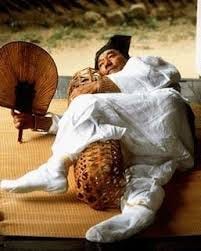Music inspires me deeply. One of my favorite poets is Edward Ka-Spel, of The Legendary Pink Dots. His book “Love and Loud Colours” is a masterpiece and I’ve owned mine (signed) since 2019’s Atlanta show. It’s everything a poetry book should aspire to- Sensurround Overload.
DETAILS
160 pages, printed on high-bulk textured stock, plus black endpages
123 writings (lyrics, stories, and fragments) gleaned from more than 40 different recordings (TOC)
67 black & white illustrations (Medieval and Renaissance etchings, line art, and woodcuts)
Hardback, covered in a fine-quality black cloth cover, with stamping on front and spine
Four-color gloss dustjacket, featuring a stained glass rose window from the Beauvais Cathedral and stylized stained glass SAINTS crafted after Ka-Spel lyric characters: the Captain, the Bride, the Witch, the Soldier, the Lonely Figure, the Nurse, the Politician, the Lovers, Tanith, and Lisa
Special features include lyrics linked with their art; lyrics linked with their page numbers, etc.
Print run: 2300 copies, the first 834 of which were numbered and wrapped in a silver ribbon (numbered copies are available only through this site).
“090301” CD illustration by New York artist Pieter Schoolwerth.
I listen to Edward while I work sometimes and these lyrics from his 2017 album “I Can Spin A Rainbow” with Amanda Palmer always haunt me. A song about not moving, a song about being trained, of operant conditioning, of remaining in statis, of a half-life of being trapped when the cage is open but it’s cozy and familiar.
“You used to tell me the hurt
The way they would strap you in freezing white basements
And wire your heart 'til your hopefulness bursts
The Queen cannot fit through the arch
So she strips off your sisters and tells you to march
And you fall in line with your hands on your throat
The parade of paralysis starts”
- Amanda Palmer & Edward Ka-Spel “The Clock At the Back of the Cage”
I thought about that verse and transcribed it to write a poem about the comforting prisons we endure and instead somehow, and in my random web travels, as it sat on a page awaiting me to return, I discovered the term “Dutch Wife” and learned all about “bamboo wives” used in some cultures.
I was deeply disconcerted by them, as a concept, they moved into my brain. Bed companions, hollow, hole-filled, for his comfort/pleasure made of the same materials as the switches and canes of corporal punishment. I imagined a bamboo wife leaving her husband to become more than holes.
“Dutch Wife”
I came to co-exist with
you five prior Winters ago,
and in the wrong hemisphere.
It was freezing, yet you still wrapped
yourself around me as if I was openwork, and you—
a furnace. I have the necessary holes, eyes, nose, mouth,
ears, the same as all other women who ever wed. As you stir in your
dreams, mumble at the ceiling, this night, this Dutch wife sneaks off to weave
herself solid from the slender long-abolished, blood-welting bamboo cane switches.







